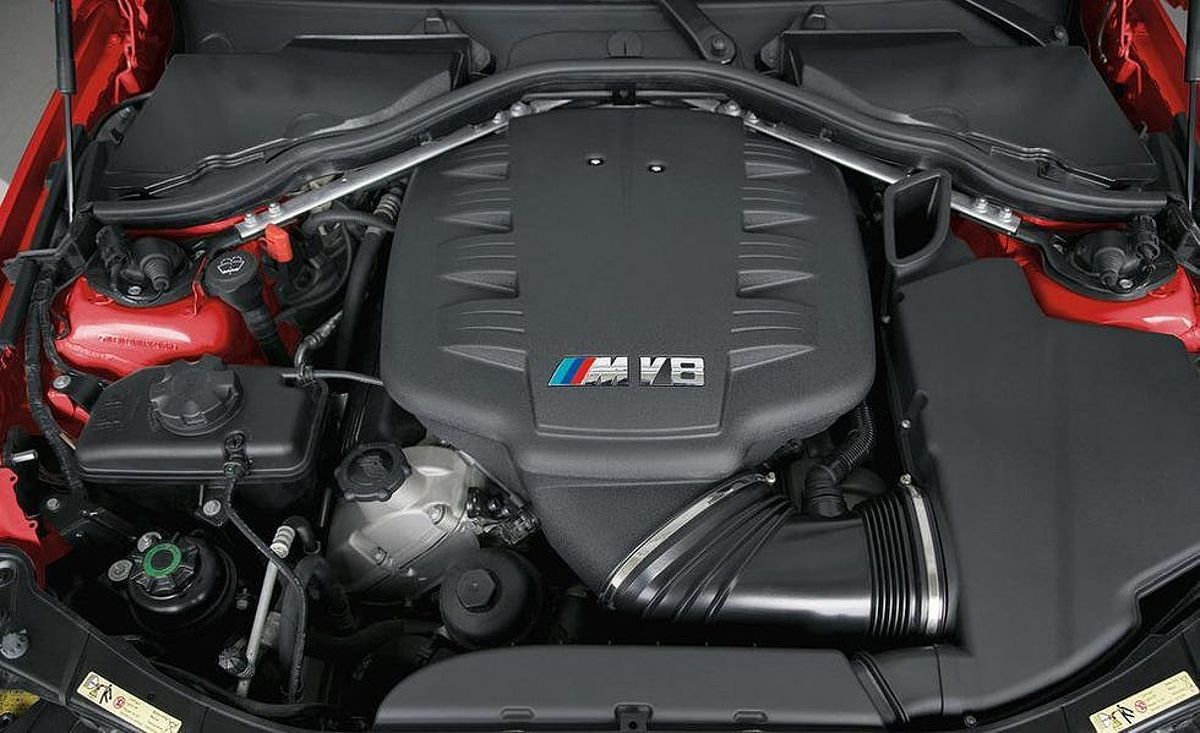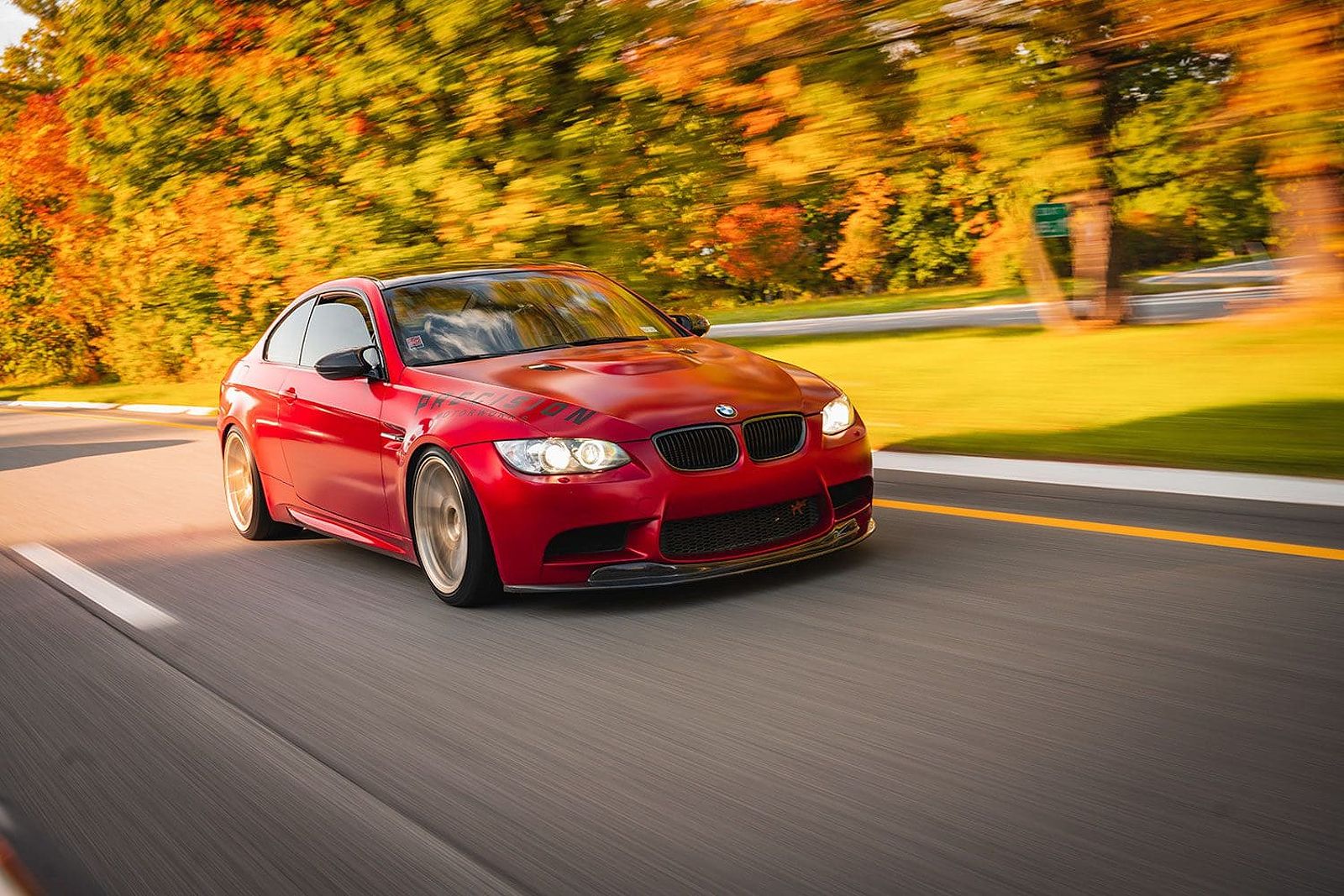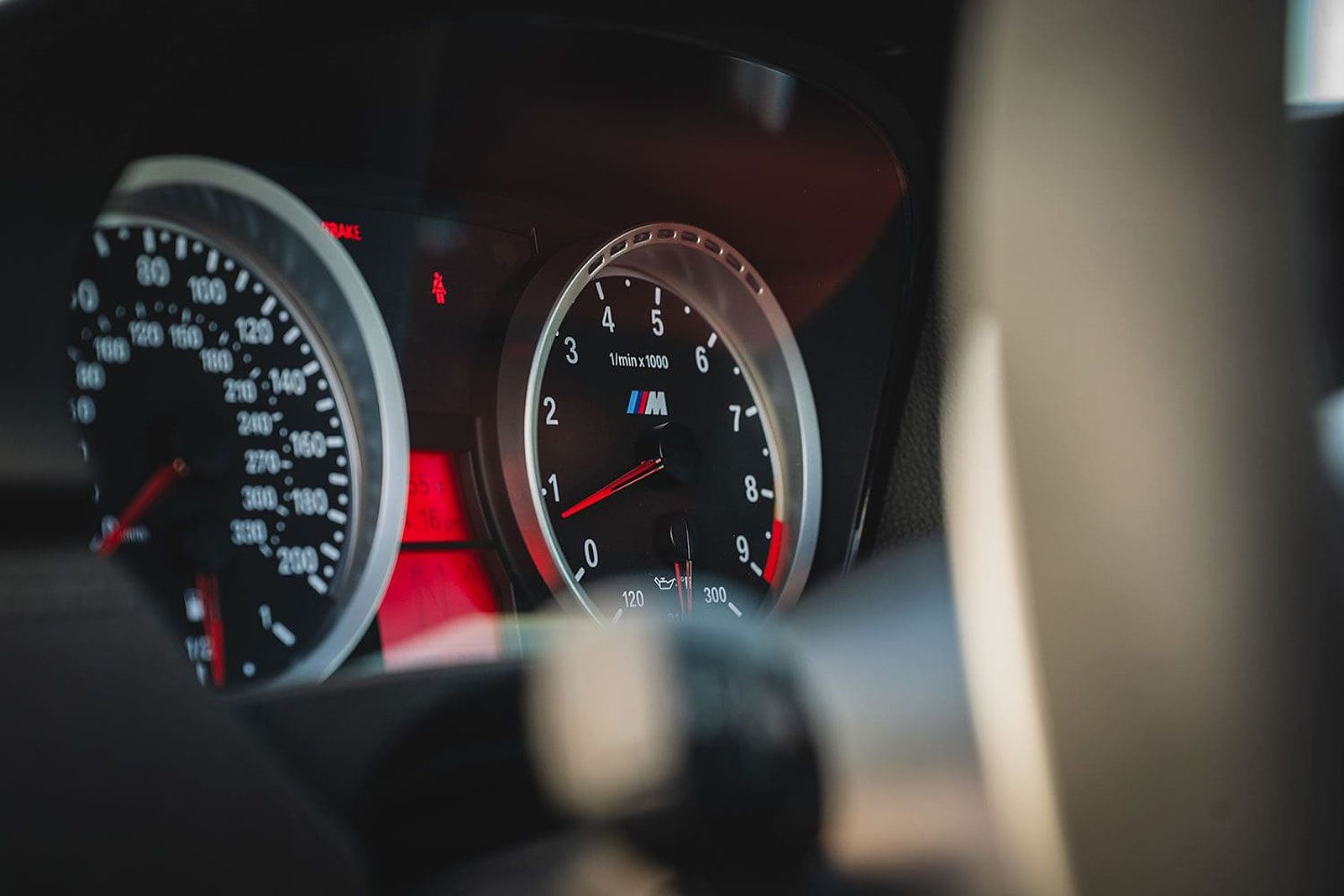The BMW M3’s legendary S65 engine, a high-revving 4.0-liter V8, is a prized possession among enthusiasts. However, its exhilarating performance comes at a cost. The bmw m3 engine v8 is known for demanding maintenance and a potential for rod bearing issues, significantly impacting the long-term ownership experience. This high-performance legacy is therefore intertwined with considerable reliability concerns.
The S65 V8: A High-Revving Masterpiece
The BMW M3 engine V8, specifically the S65, stands out in automotive engineering. With a 4.0-liter displacement, this engine marked a bold departure from the straight-six configurations that defined earlier M3 models. The S65 was derived from the larger 5.0-liter V10 engine found in the M5 and M6, with two cylinders removed to create a lighter, compact powerhouse.
Technical Specifications and Design Features
- Displacement: 4.0 liters
- Derived From: M5/M6 V10
- Power Output: 414 horsepower at an astonishing 8,300 RPM
- Torque: 295 lb-ft
- Redline: 8,400 RPM
The S65 features a siliconized aluminum block, incorporating hard silicon crystals in the cylinder walls, which eliminates the need for traditional iron liners. This innovative design not only reduces weight but also enhances heat dissipation, a crucial element for maintaining performance at high revs.

The engine’s advanced valvetrain includes BMW’s Double VANOS variable valve timing system, allowing for remarkable efficiency. Additionally, the use of individual, electrically operated throttle butterflies for each cylinder bank improves responsiveness, creating a driving experience that was unmatched in its time.
Comparing the S65B40 and S65B44 Variants
The S65 engine family includes two notable variants: the S65B40, the standard 4.0-liter V8 engine in the E92 M3, and the S65B44, a 4.4-liter stroker variant exclusive to the M3 GTS. The S65B44 boasts higher performance figures, making it a rare gem among enthusiasts.
- S65B40: 4.0L, 414 hp, 295 lb-ft
- S65B44: 4.4L, 493 hp, 384 lb-ft
Both engines exemplify BMW’s commitment to high-revving performance, but the S65B44’s enhancements cater to those seeking even more adrenaline.
Performance and Handling: The BMW M3 Engine V8 Experience
The E92 M3, equipped with the BMW M3 engine V8, offers a driving experience that’s nothing short of exhilarating.
Power Delivery and Throttle Response
Drivers often describe the S65’s power delivery as a “Jurassic Park moment”—calm and collected at lower revs, only to unleash a ferocious surge of power as the tachometer needle climbs towards the redline. The S65 demands a nuanced touch; its high-revving character rewards precise control, allowing skilled drivers to extract a visceral experience that few cars can match.
Chassis and Suspension Dynamics
While the S65 V8 is undoubtedly the star of the show, the E92 M3’s chassis and suspension setup play a vital role in its overall performance. Despite an increase in size and weight compared to its predecessor, the E92 M3 maintains an impressive balance and poise.
- Wide Track: Enhances stability during cornering.
- Sophisticated Suspension Geometry: Allows for precise handling.
- Well-Weighted Steering: Provides excellent feedback and connection to the road.

In independent testing, the E92 M3 has achieved 0-60 mph times in the low 4-second range, with lap times on tracks like the Nürburgring Nordschleife that compete closely with rivals such as the Audi RS4 and the Mercedes-Benz C63 AMG. The E92 M3 shines with its razor-sharp throttle response and the ability to spin to 8,400 RPM effortlessly, offering a unique driving experience that sets it apart from its competitors.
However, the E92 M3’s relatively stiff suspension can compromise ride comfort, especially on rough roads, presenting a trade-off between performance and daily usability.
Reliability and Maintenance: Understanding the Challenges
No discussion of the BMW M3 engine V8 would be complete without addressing its well-known reliability concerns, particularly the rod bearing issues that have plagued the S65.
Rod Bearing Issues
The high-revving nature of the S65, combined with its lightweight internal components, has made the rod bearings susceptible to premature wear and failure. Oil starvation—often due to insufficient oil pressure or low oil levels—has been linked to bearing failure. The high RPM and elevated oil temperatures contribute to oil degradation, further increasing the risk. It’s crucial to use the correct oil viscosity specified by BMW to mitigate these issues.
While many E92 M3 owners report rod bearing issues, some have experienced high mileage without such problems, suggesting that proper maintenance and driving habits can significantly reduce the risk.
Recommended Maintenance Practices
To mitigate the risk of rod bearing failure, regular oil changes using high-quality oil are essential. Here are some best practices:
- Oil Type: Use synthetic oil that meets BMW specifications.
- Change Intervals: Adhere to shorter intervals than recommended—every 5,000 miles is a good rule of thumb.
- Monitor Oil Levels: Regularly check and top off oil levels to ensure proper lubrication.
Cost Implications of Maintenance
Owning an E92 M3 with the S65 V8 can be an expensive endeavor. The high-performance nature of the engine necessitates regular servicing and preventive maintenance to ensure longevity.
- Repair Costs: Addressing rod bearing issues can be costly, potentially requiring a full engine rebuild.
- Overall Maintenance Costs: Higher than typical vehicles due to specialized parts and labor.
Prospective buyers should weigh the financial implications of maintaining this iconic sports car carefully.
The E92 M3s Legacy and Collectibility
As the E92 M3 and its BMW M3 engine V8 continue to age, their collectibility and value are on the rise.
Rarity and Market Value
With approximately 5,000 units sold in the US, the E92 M3 is becoming increasingly rare. This rarity, combined with its impressive performance credentials, has made it a sought-after item among collectors. Recent auction results indicate that well-maintained models, especially special editions like the Lime Rock Park Edition, command high prices on the secondary market.
Significance of the S65 V8 in Automotive History
The S65 V8 has cemented its place in BMW’s performance legacy, ensuring it will be celebrated by enthusiasts for years to come. As the E92 M3 approaches its 15th anniversary, its status as a collector’s item is only expected to grow.

Transmission Options: DCT vs- Manual
The E92 M3 offers two transmission options: the dual-clutch transmission (DCT) and a traditional manual gearbox. Each has its strengths and weaknesses.
DCT Advantages and Disadvantages
- Speed and Efficiency: The DCT provides lightning-fast gear changes and improved fuel efficiency.
- Potential Issues: Known for oil leaks and mechatronics problems that can arise with age.
Manual Transmission Advantages and Disadvantages
- Driver Engagement: The manual gearbox offers a more engaging driving experience for enthusiasts.
- Maintenance Needs: Clutch and flywheel replacements may be necessary depending on mileage.
Reliability Comparisons
Both transmission types have their own set of challenges, but owner experiences suggest that with proper care, either can be reliable.
Frequently Asked Questions (FAQ)
Q: What are the common problems with the S65 V8 engine?
A: The most significant issue is rod bearing failure, often linked to insufficient lubrication. Regular oil changes with high-quality oil are crucial for preventing this. Other potential issues include valve cover leaks and VANOS system problems.
Q: How much does it cost to maintain an E92 M3?
A: Maintenance costs are significantly higher than for a typical car due to the high-performance nature of the engine and specialized parts. Budget for regular servicing and factor in potential major repairs like rod bearing replacement.
Q: Is the E92 M3 a good daily driver?
A: While capable, it’s not ideal for daily driving due to its firm suspension, relatively low fuel economy, and high maintenance costs. It’s better suited as a weekend car or enthusiast vehicle.
Q: What’s the best way to buy a used E92 M3?
A: Thoroughly inspect the vehicle’s history, including service records, and consider a pre-purchase inspection by a BMW specialist. Be prepared for potential repair costs.
Conclusion
The BMW M3’s S65 V8 engine represents a pinnacle of high-revving naturally aspirated V8 performance. While reliability concerns exist, its unique character, exhilarating driving experience, and growing collectibility solidify its place in automotive history. For prospective buyers, careful consideration of maintenance costs is essential, but the reward for those who can handle it is a truly special driving machine. If you’re a serious enthusiast, the E92 M3 with the S65 V8 is an investment worth considering, especially if you can find a well-maintained example.
